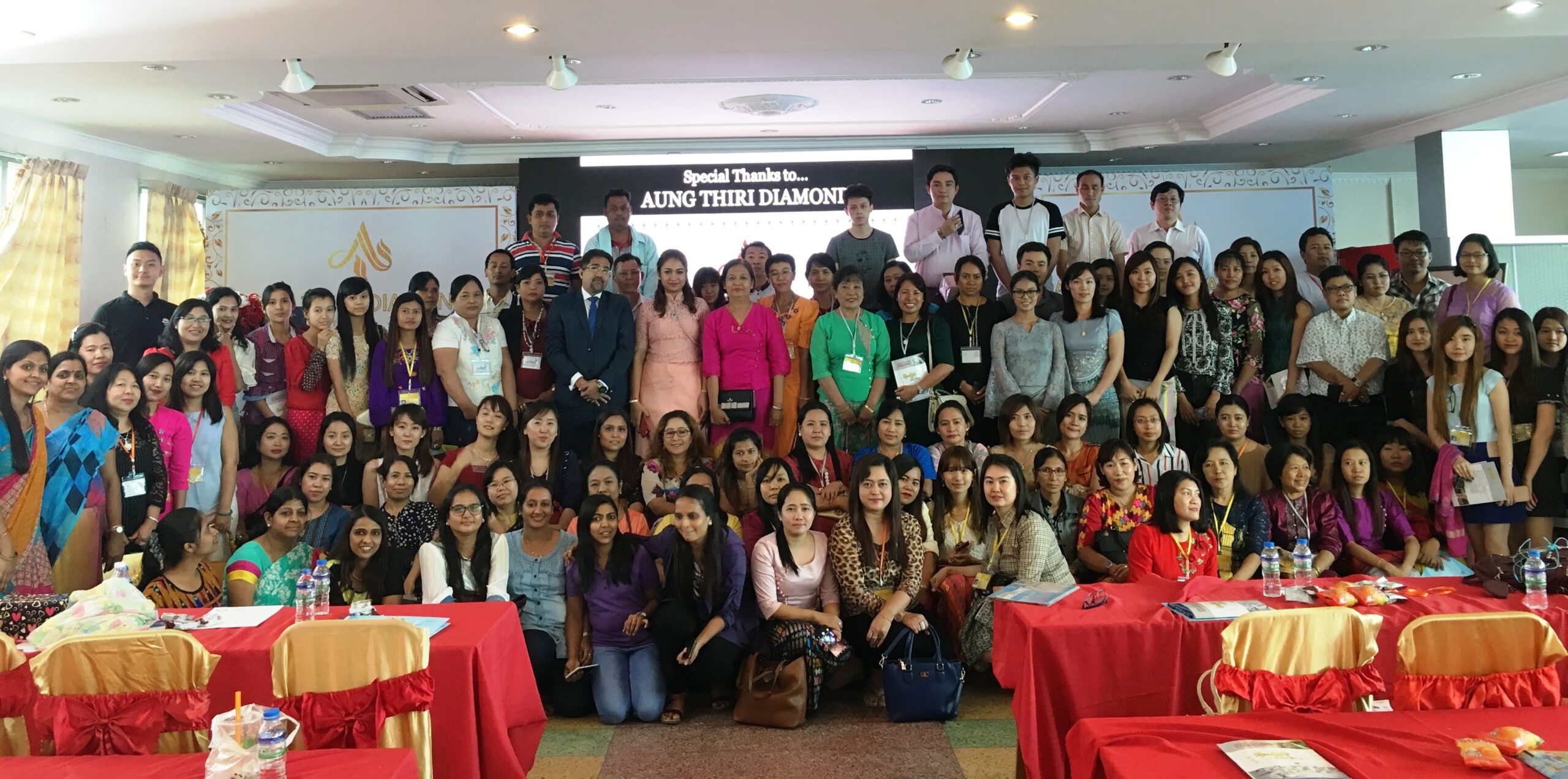What Are Laboratory Grown Diamonds?
Laboratory Grown Diamonds, also known as lab-created diamonds, synthetic diamonds, or cultured diamonds, are diamonds that are created in a controlled laboratory environment rather than being formed deep within the Earth’s crust through natural geological processes. These diamonds have the same chemical, physical, and optical properties as natural diamonds, but they are produced through advanced technological methods.
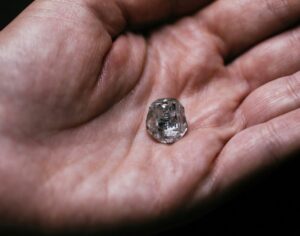 Key points about laboratory-grown diamonds:
Key points about laboratory-grown diamonds:
- Formation: These diamonds are created using one of two primary methods: High Pressure High Temperature (HPHT) or Chemical Vapor Deposition (CVD). Both methods simulate the conditions under which natural diamonds form.
- Chemical Composition: Laboratory-grown diamonds are composed of carbon atoms arranged in a crystal lattice structure, just like natural diamonds. They have the same hardness (10 on the Mohs scale), brilliance, and fire as natural diamonds.
- Grading: Laboratory-grown diamonds undergo the same grading criteria as natural diamonds, which include the Four Cs: Carat weight, Cut, Color, and Clarity. They can also be certified by reputable gemological laboratories.
- Ethical and Environmental Considerations: One of the key advantages of lab-grown diamonds is their reduced impact on the environment and ethical concerns compared to traditional diamond mining.
- Price: Lab-grown diamonds are generally more affordable than their natural counterparts, often priced at a fraction of the cost. This affordability makes them an attractive option for consumers looking for high-quality diamonds at a lower price point.
- Uses: Lab-grown diamonds are used in various jewelry applications, including engagement rings, necklaces, earrings, and more. They are virtually indistinguishable from natural diamonds to the naked eye, and even experienced gemologists may require specialized equipment to differentiate between the two.
- Market Growth: The market for lab-grown diamonds has been growing steadily due to increasing consumer interest in sustainable and ethically sourced products. Many consumers are attracted to the idea of purchasing diamonds that align with their values.
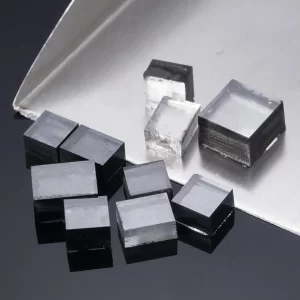 It’s important to note that while lab-grown diamonds share many characteristics with natural diamonds, they are distinct from diamond simulants like cubic zirconia or moissanite, which have different chemical compositions and optical properties. Consumers interested in lab-grown diamonds should make sure to purchase from reputable and transparent sources and consider their personal preferences and priorities when choosing between lab-grown and natural diamonds.
It’s important to note that while lab-grown diamonds share many characteristics with natural diamonds, they are distinct from diamond simulants like cubic zirconia or moissanite, which have different chemical compositions and optical properties. Consumers interested in lab-grown diamonds should make sure to purchase from reputable and transparent sources and consider their personal preferences and priorities when choosing between lab-grown and natural diamonds.
Laboratory Grown Diamonds are becoming more and more available. They are being made in larger amounts, better quality, and even in new colors. And guess what? People are finding their prices appealing. That’s why these lab-grown diamonds are becoming more popular and noticeable when we go shopping.
Imagine having diamonds that are made in a lab. These lab-made diamonds are getting better and shinier, and they even come in fancy colors. People like them because they don’t cost as much as the ones that come from the ground. That’s why we’re seeing more and more of these lab-grown diamonds when we look for jewellery.
What is the history of Laboratory Grown Diamonds?
The inception of laboratory-grown diamonds suitable for industrial applications dates back to the 1950s. The milestone of producing gem-quality diamonds within a laboratory setting was achieved in 1971. However, it wasn’t until the mid-2010s that colorless laboratory-grown diamonds made their entry into the commercial gem and jewelry market in significant quantities.
The term CVD is called Carbon Vapour Deposition. General Electric (GE) created made the first man-made diamond. It was created by H. Tracy Hall, a General Electric chemist. The first patent for CVD was issued in 1954. The scientists couldn’t refine the process so that it could produce gem-quality diamonds until the 1980s. The technology was invented by the Head of the Chemistry Department of Harvard University, Professor Roy Gordon in 1970 and his team perfected the art of creating CVD
diamonds by the 1980s.
How are Laboratory Grown Diamonds made?
Two primary methods facilitate the creation of laboratory-grown diamonds.
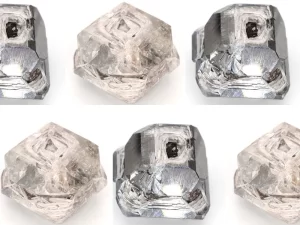 The High Pressure, High Temperature (HPHT) technique involves replicating the extreme conditions of heat and pressure that lead to natural diamond formation deep within the Earth. This process results in the creation of uniquely shaped laboratory-grown diamond crystals.
The High Pressure, High Temperature (HPHT) technique involves replicating the extreme conditions of heat and pressure that lead to natural diamond formation deep within the Earth. This process results in the creation of uniquely shaped laboratory-grown diamond crystals.
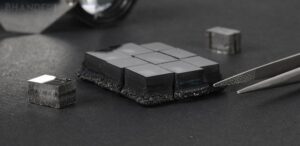
Conversely, the Chemical Vapor Deposition (CVD) method dismantles carbon-rich gas molecules, such as methane, into carbon and hydrogen atoms. These atoms then adhere to diamond seeds, culminating in the production of square-shaped, tabular diamond crystals.
The duration of diamond growth by either method is generally less than a month for most sizes. Many CVD-grown diamonds undergo supplementary treatments like heat or irradiation post-growth to enrich or alter their color profiles.
Although laboratory-grown diamonds initially tended to be smaller, advancements in technology and techniques have paved the way for larger stones to emerge in the market, marking a significant evolution in the industry.
How are Laboratory Grown Diamonds identified?
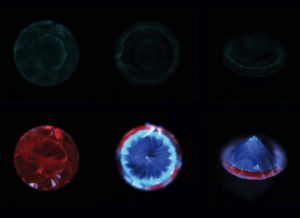 Laboratory-grown diamonds require advanced testing in a gemological laboratory to be identified with certainty. At laboratories, scientists or expert graders used sophisticated instruments to analyze diamond strain patterns, trace element composition, inclusions, fluorescence, phosphorescence and more in order to separate laboratory-grown diamonds from natural.
Laboratory-grown diamonds require advanced testing in a gemological laboratory to be identified with certainty. At laboratories, scientists or expert graders used sophisticated instruments to analyze diamond strain patterns, trace element composition, inclusions, fluorescence, phosphorescence and more in order to separate laboratory-grown diamonds from natural.
These factors are different due to the vastly different formation conditions of laboratory-grown and natural diamonds. The way lab-made diamonds and real ones are created is totally different. This makes them have different things inside them and they kind of look different too. These differences happen because lab-made diamonds and real ones are born under different conditions. The smart experts use these differences to tell them apart.
Why IIG is the best institution to learn about Lab-grown Diamond ?
International Institute of Gemology – IIG stands out as a premier institution for learning about lab-grown diamonds due to its seasoned experts, cutting-edge curriculum, hands-on training with advanced equipment, potential certification, industry connections, and dedication to staying updated in this evolving field. The institution’s reputation, holistic approach, and flexible learning options further solidify its status as a top choice for those seeking comprehensive education in lab-grown diamonds.
IIG sets itself apart with its unparalleled practical programs, featuring the latest instruments and advanced identification equipment. This ensures students gain hands-on experience and proficiency in using the most up-to-date tools in the field of lab-grown diamond education.
Visit the fastest-expanding premier education institute of the Gems and Jewellery Industry at our locations at Mumbai – Opera House & Andheri (East), Bengaluru, Kolkata and Surat.
We are easily accessible on Instagram, Facebook, Twitter, LinkedIn and Google. @iigofficial
Categories
- Achievement
- Ai Created Jewellery Design
- AI into Your Jewellery Retail Business
- Anniversary
- Birthstone
- Blockchain
- Career Opportunity
- collaboration
- Corporate Training
- Creative
- CVD
- Design
- Diamond Graduate
- Diamonds
- Education
- Educative
- Emerald
- Enhancements
- Event
- Gem and Jewelry (G&J) industry
- Gemology
- Gemology Graduate
- Gemstone
- Gold Silver Assaying
- Graduation and Awards Ceremony
- History
- HPHT
- IIG’s Jewellery
- Industry News
- Industry Visit
- Jewellery
- Jewellery Designing
- jewellery merchandising
- Lab grown diamond
- Marketing
- Masters In Diamonds
- pearl gemstone
- Ruby
- Sythetic Diamonds
- Technology
- Toi et Moi Ring
- Treatments
- Uncategorized
Tags
You May Also Like
SRDC Visit to 34th Edition of IIJS
SRDC visit to HK HUB – Hari Krishna Export’s state-of-the-art Diamond Manufacturing Unit
Learning Jewellery Designing CAD shouldn’t be difficult.
Mandalay Seminar Boosts SRDC’s Global Endeavors
Interested in one of our courses at IIG?
Call us directly?
- Our Campuses
- Mumbai
- Surat
- Ahmedabad
- Kolkata
- Bengaluru



